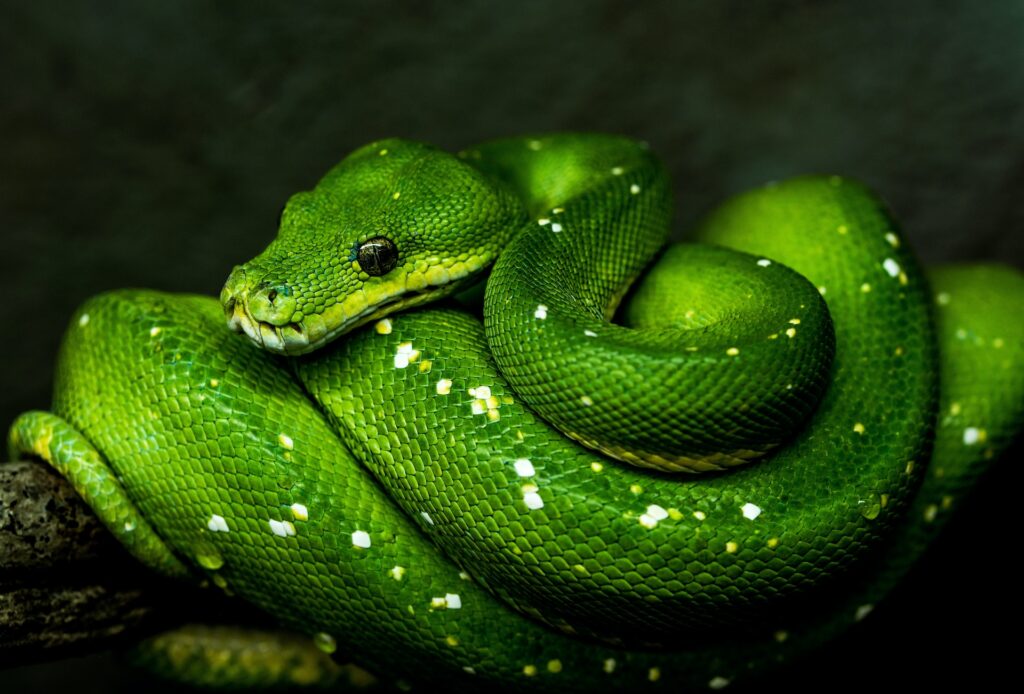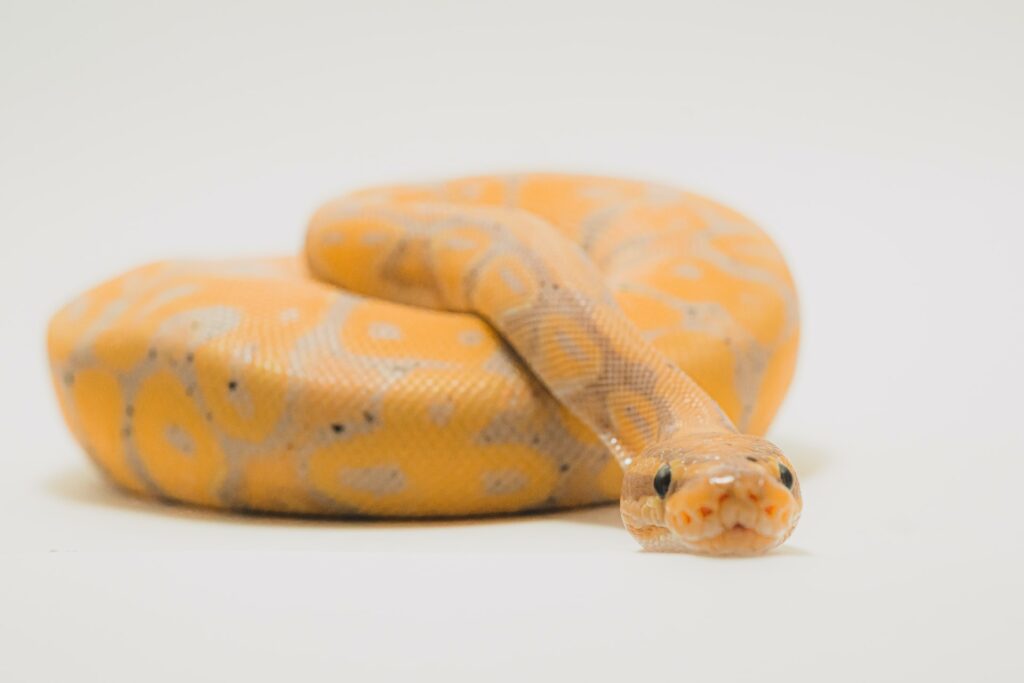Your Beginner’s Guide to Keeping Pet Snakes
Aug 29, 2023

As an Amazon Associate, Modded gets commissions for purchases made through links in this post.
Does your taste in pets run to the exotic? From boas to ribbon snakes, there’s a member of this reptile family to delight every enthusiast. However, a handy beginner’s guide makes keeping pet snakes more enjoyable and less hazardous.
Where will your new friend live and what will they eat? What type of food is best? Are there any ways to make money with your hobby? Here’s your beginner’s guide to keeping pet snakes that tells you all you need to know to begin having fun as an amateur herpetologist.
1. Choose the Right Species
There are over 3,000 species of snakes worldwide, and not all of them are suitable as pets. What are some of the most popular varieties? You’ll probably encounter the following when you begin looking at pet shops:
- Ball pythons: This species grows to approximately three to five feet long and is plump. Is very docile and eats frozen or fresh food.
- Corn snakes: One of the most colorful snakes in various motley and striped patterns, reaching lengths of four to six feet but small at only two pounds.
- Green anaconda: For the big boys. These puppies can grow to over 500 pounds, with the females larger than the males.
- Rosy boas: Approximately the size of a ball python but thinner and more lively.
- Ringneck snakes: The first of the smaller snakes, growing only to roughly a foot in length.
- Garter snakes: Small and thin, approximately one to two feet in length. You may find these snakes in your garden.
- Green snakes: Long and thin, growing to nearly three feet but lean.
Can You Keep a Venomous Snake as a Pet?
All the snakes in the list above are non-venomous, although their bites can cause injury. While many states allow you to keep venomous snakes with the appropriate permit, you should probably leave it to the experts. There are rules surrounding endangered species, and many labs use such subjects to create anti-venom.
Carefully examine your motivation — and potential liability — before keeping venomous snakes. People have faced criminal charges when such dangerous animals escape captivity and menace area neighborhoods.
2. Housing Your Pet Snake
You need the right enclosure for keeping your pet snake. How big should it be? Generally, about ⅔ the length of your snake is a good estimate. Therefore, 10 to 20-gallon aquariums are suitable for smaller critters like garter and ring-neck snakes.
Larger snakes might require a cage. For example, it’s common to keep larger boas and anacondas in stand-up enclosures typical of the kitten cages seen at many pet stores. However, the mesh may be smaller to prevent a slithery escape.
What Toys and Substrates to Use When Keeping Pet Snakes
The best substrate depends on your snake’s natural habitat. For example, desert creatures will likely feel most comfortable with calcium sand as a substrate, whereas forest breeds might prefer moss and bark. Consult with the herpetologist at your local pet shop for recommendations.
Your snake won’t run on a wheel like a hamster, but they still appreciate a few home furnishings. A branch for climbing and a shallow dish for cooling off in the water make nice amenities.
Since snakes are cold-blooded creatures, you’ll want to mount a thermometer to either side of their enclosure. Doing so helps you maintain a constant tank temperature and adjust it as necessary for mating.
Where Do Pet Snakes Poop?
Pet snakes poop in their enclosures — keeping them clean is up to you. Most experts recommend a combination of spot-cleaning and periodic deep cleaning to keep the substrate fresh and the environment healthy. Scoop out obvious feces as you see them and disinfect a part of the cage each change, keeping some of the old substrate to retain that “scent of home.”
Breeding and Selling Snakes
Can you make money with your snake-keeping hobby? Yes, if you mate the parents and sell the offspring!
Snakes typically mate after emerging from hibernation. Therefore, you’ll likely need to induce an artificial one by manipulating the tank temperature before bringing the male and female together.

3. Feeding Your Pet Snake
Snakes are obligate carnivores, meaning they have to eat meat. Therefore, you’ll have to provide them with live or frozen mice or fish, even if you follow a vegan lifestyle. Keep this in mind when obtaining your pet. Feeding your baby is an important part of keeping pet snakes, so consider an alternative if nature documentaries make you squeamish.
Should You Feed Your Pet Snake Live or Frozen Food?
Many vets recommend that you train your snake to eat dead food because it is safer for your snake. After all, mice and rats have teeth and claws. Fortunately, most pet stores sell frozen fish and mice for this purpose, meaning you don’t have to do the dirty work yourself.
However, please note that some snakes will refuse anything but live food. In such cases, you must be willing to place a live fish in their bowl or a mouse in their cage. Whether you watch what follows is up to you.
How Much Water Does Your Pet Snake Need?
Snakes need water like all living creatures. Installing a shallow basin in their enclosure is the best way to ensure your friend gets enough. It should be just deep enough to allow them to submerge their body to get cool. You should change their water once per day.
The bottom of a snake’s mouth contains small grooves that act like sponges, absorbing the water. They then use their jaw muscles to swallow the fluid.
4. Do Pet Snakes Go to the Vet?
There are no vaccination requirements for snakes, unlike dogs and cats. Therefore, many snake owners never take their pets to the vet.
However, these creatures can get sick like anything else. Most veterinarians recommend an annual checkup, including blood tests, to ensure your pet stays healthy.

5. 7 Safe Handling Tips for Keeping a Pet Snake
Handling a snake is unlike playing with a puppy or kitten. Here are seven safe handling tips when keeping pet snakes:
- If possible, have the snake come to you: Snakes often bite when frightened. Letting them approach you eases their nerves.
- Let the snake explore freely: Confining your serpent friend raises their stress levels. Let them crawl around you freely and explore.
- Be aware of discharge: Your pet may go to the bathroom or emit a musky discharge upon being held — brace yourself and have the means to wash your hands afterward.
- Use slow, steady movements: Using soothing movements prevents fear.
- Support the mid-body: Your snake’s internal organs are near the midline of its body, requiring more support.
- Avoid the tail and head areas: Avoid grabbing your snake by the head or tail when possible. It’s the equivalent of grabbing you by the hair or ankle.
- Know when enough is enough: Your snake will grow restless when weary of being held. Tune into their cues and know when to return them to their enclosure.
How Often Should You Handle a Pet Snake?
Snakes are great pets for low-maintenance owners. You only need to handle them once a week, although you can do so daily if they aren’t shedding, stressed or freshly coming off a meal.
Keeping a Pet Snake
Keeping a pet snake is a fabulous way to learn more about the animal kingdom. These low-maintenance critters are ideal for people who don’t have a lot of time but nevertheless want a companion.
Follow these tips for keeping your pet snake happy and healthy. Use this guide to set yourself up for herpetology success.






